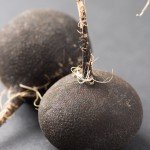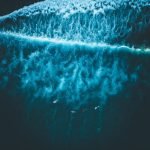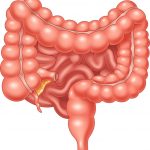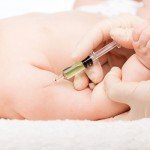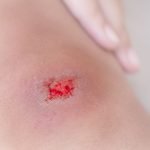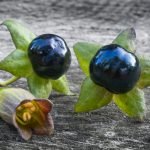Oh No, Not That!
JOSEPH KELLERSTEIN, ND
James phoned for a consult the other day. He had just had a vasectomy and was suffering a few postoperative consequences (how clinical of me).
Do not get me wrong; I certainly did feel sympathy. In fact, I squirmed a bit with the description. I guess I needed a bit more detachment.
James was courageously giving it the stiff upper lip and was very low key in his description. He had had the surgery last week and was having lots of testicular pain, with retention of urine. His surgeon did reassure him. That did not help the pain. There was also an uncomfortable flatulent distension of the lower abdomen.
He did admit to a strong feeling of anxiety about his health at this point. (So would I.)
Mouth sores had developed since the surgery. Mostly, they were on the tongue and felt better when drinking. In fact, his general thirst was much stronger. There was also a coldness of the hands that had come on with all the anxiety and postoperative discomfort.
When he could urinate satisfactorily, all was much better. Most often, however, there was lots of dribbling after a not-so-great urination.
The pain in the testes was as if something had torsioned or twisted. (Ouch.)
That was all I got on the initial expression and questioning. It looked like this on the repertory chart:

However official a computer-generated image looks, this one is not compelling. There is no “genius” that stands out. In other words, I have not rendered obvious any peculiar individualizing symptoms. I have not done my job. There is nothing striking.
Quoting from “scripture” (only partially kidding), aphorism 153 from the Organon states: “…The more general and undefined symptoms: loss of appetite, headache, debility, restless sleep, discomfort, and so forth, demand but little attention when of that vague and indefinite character, if they cannot be more accurately described, as symptoms of such a general nature are observed in almost every disease and from almost every drug.” The boldfaced italics are mine.
Aphorism 153 is the clinical centerpiece of the Organon. This sentence is the back end of the statement and is usually taught on that final out-breath of lecture when everyone is drifting off into a deep sleep.
I take it to mean something very resourceful. It says we need to skillfully question the undefined aspects of the case until there is a compelling genius evident.
Along these lines, I have spent since the mid-1990s studying neurolinguistic programming and more recently an offshoot of that discipline called Clean Language (developed by David Grove) in an effort to improve my skills at identifying and elucidating those foggy areas of case expression. The results have improved not only my prescribing but also the clarity that comes about for both the patient and the physician to better understand things all around and can be very therapeutic for the client.
Often when a client returns for some reason years later, he or she will say, “I never forgot that question you asked.” Of the many questioning techniques that are so helpful is the “bundling of emphasized aspects.” By this, I mean we feed back and repeat statements the client has made in an effort to show active listening (as we all have been taught), but this is a bit different.
We need to exquisitely notice those aspects of the patient explanation that contain the greatest amount of energy as expressed verbally or by gesture. Bundle those, and feed it back. This level of observation and communication puts the client in a deeper state of reflection and can often yield surprisingly useful homeopathic information.
As an example in this case, I asked: “And with twisting pain in the testicle, worry about your health, and bloating of the lower abdomen, is there anything else about all that?” The spontaneous answer was “I need to guard against the slightest touch, which so makes the pain awful!”
James had taken lots of Arnica already on his own. So, was there any remedy in that previously flat repertory chart that now stands out? Sure. Staphysagria is immediately highlighted for us.
The plan was for James to take Staphysagria 10M as needed. A follow-up visit was scheduled in 1 week.
By that evening, his thirst was awful. James stated: “I was dry as a whistle. In 24 hours, I must have had 20 glasses of water, but no pain! I redosed 4 days later as the pain was starting to return, and it went. To a much smaller degree, it is returning today, but I waited to redose until we spoke.”
I asked that James redose. The Organon is an absolutely amazing clinical guide.
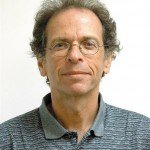 Joe Kellerstein, DC, ND graduated as a chiropractor in 1980 and as an ND in 1984. He graduated with a specialty in homeopathy from the Canadian Academy for Homeopathy, and subsequently lectured there for two years. He also lectured in home-opathy for several years at CCNM; for eight years at the Toronto School of Homeopathic Medicine and for two years at the British Institute for Homeopathy. Dr. Kellerstein’s mission is the exploration of natural medicine in a holistic context, especially homeopathy and facilitating the experience of healing in clients.
Joe Kellerstein, DC, ND graduated as a chiropractor in 1980 and as an ND in 1984. He graduated with a specialty in homeopathy from the Canadian Academy for Homeopathy, and subsequently lectured there for two years. He also lectured in home-opathy for several years at CCNM; for eight years at the Toronto School of Homeopathic Medicine and for two years at the British Institute for Homeopathy. Dr. Kellerstein’s mission is the exploration of natural medicine in a holistic context, especially homeopathy and facilitating the experience of healing in clients.




